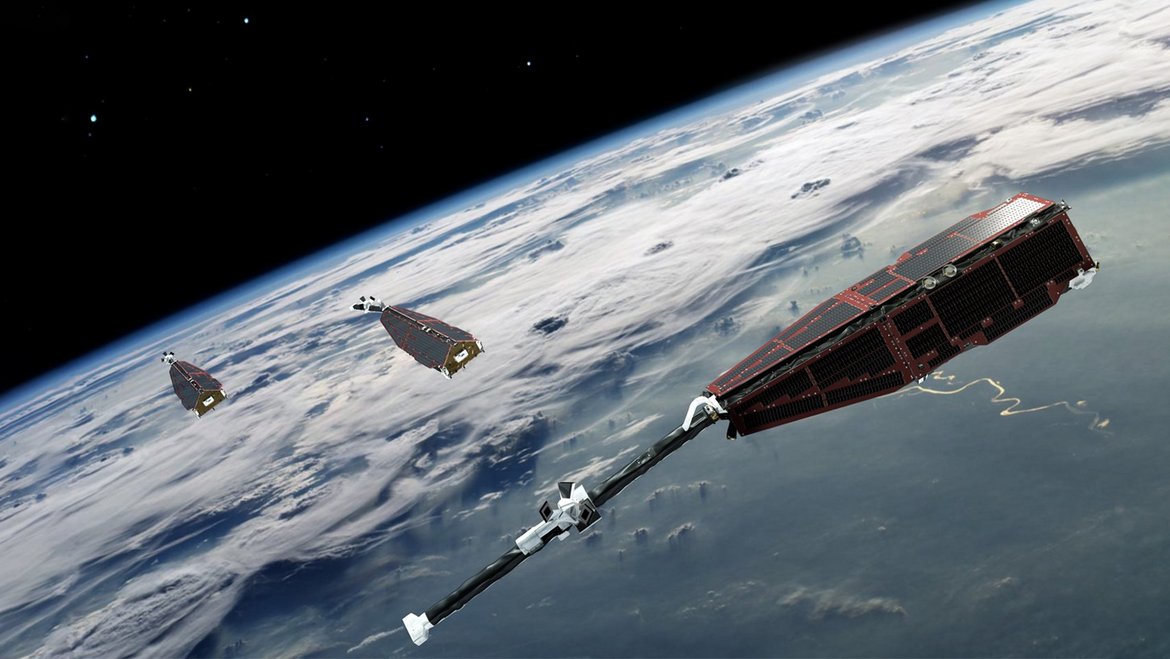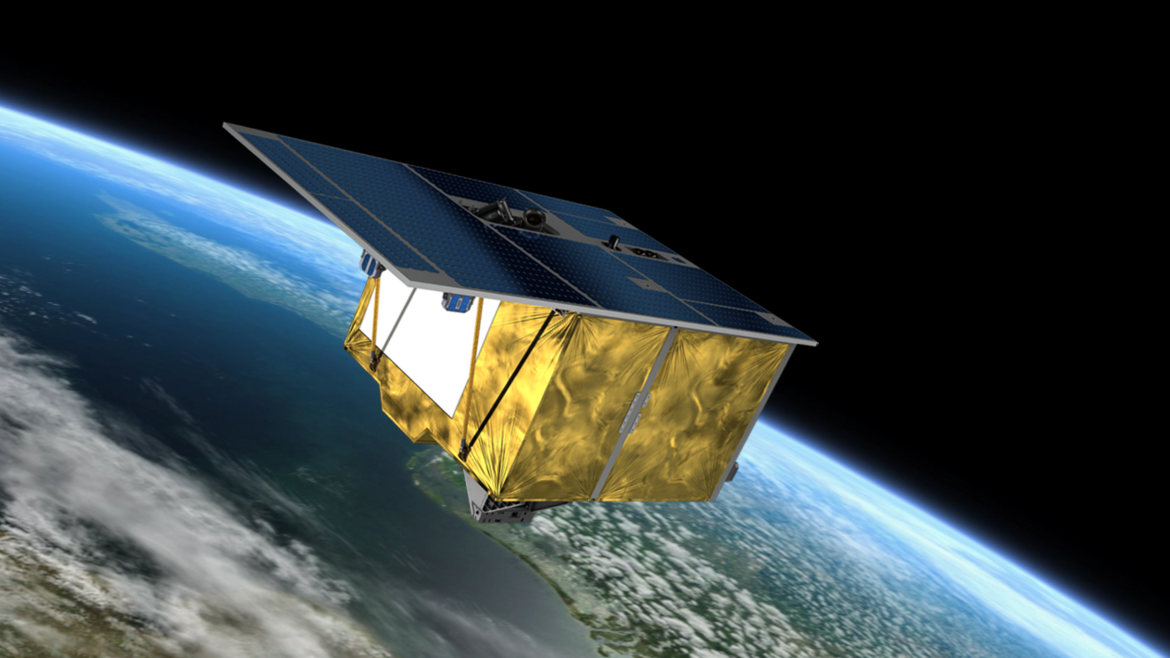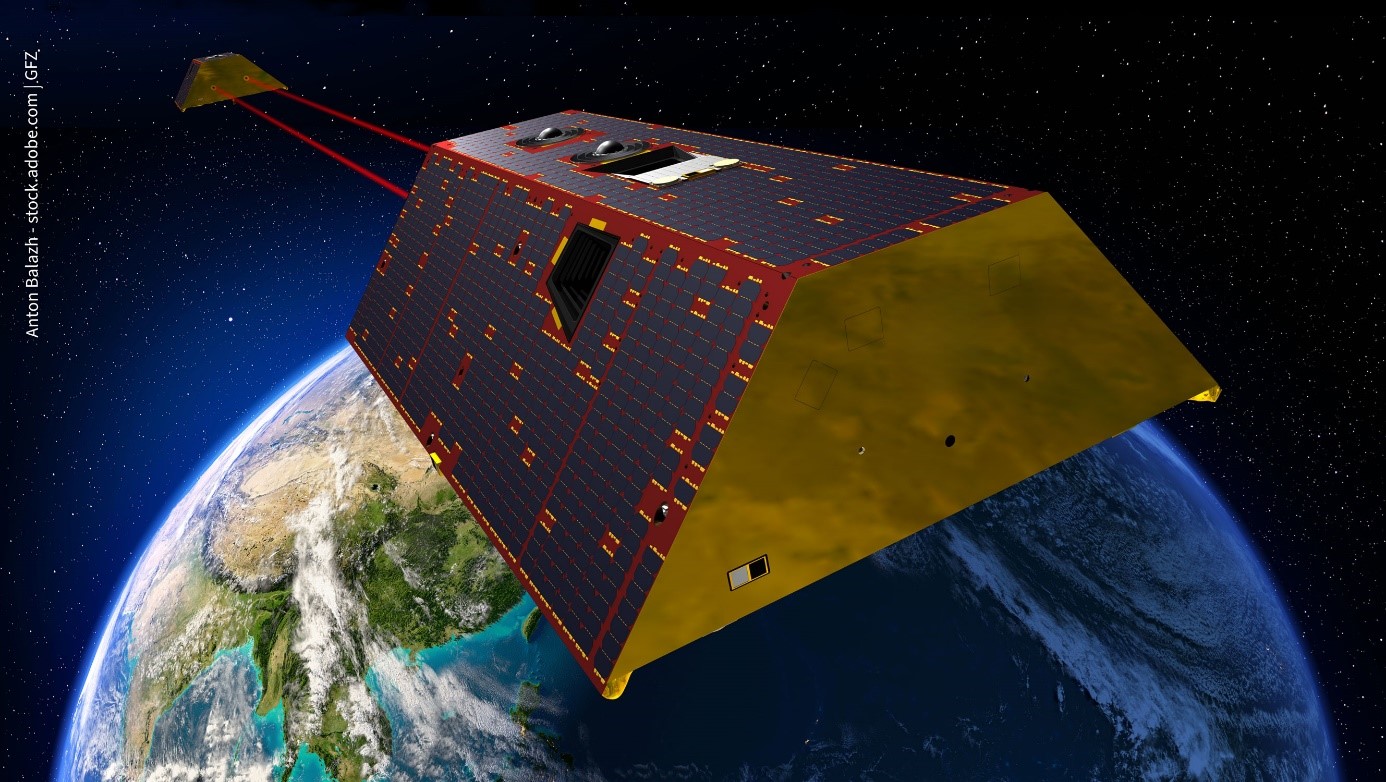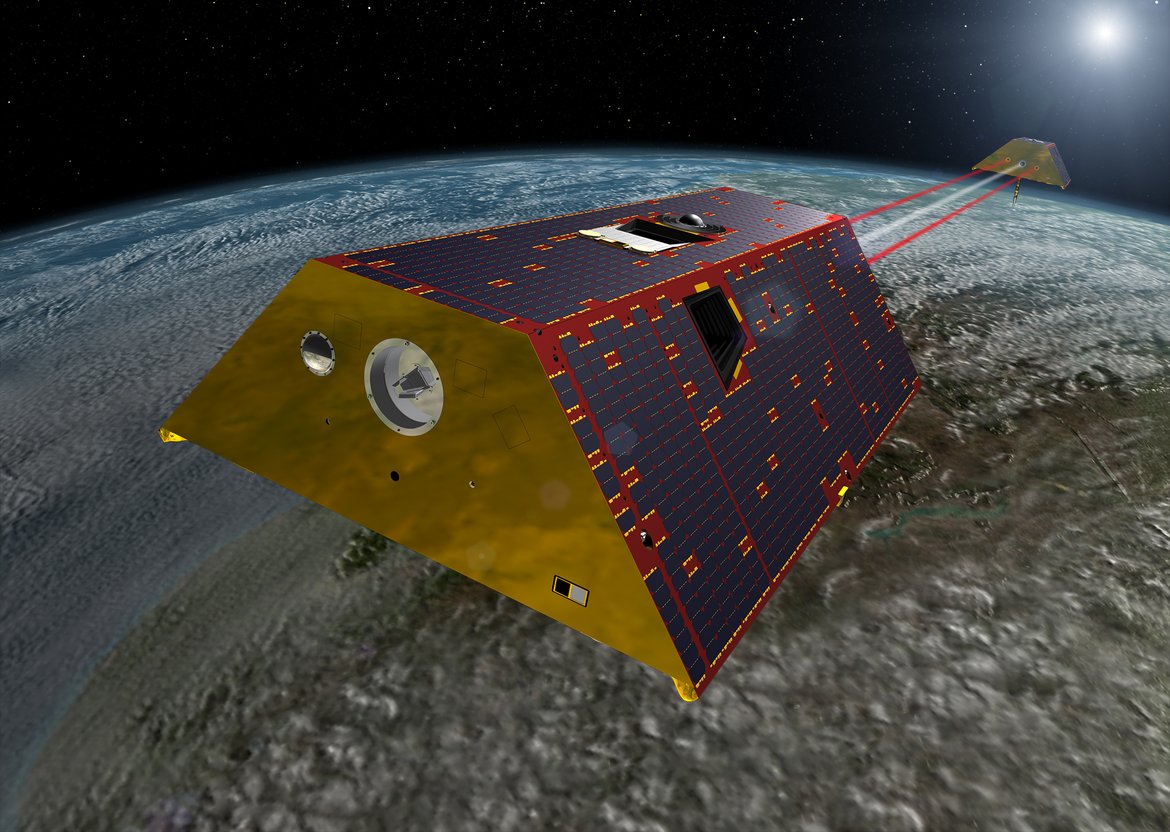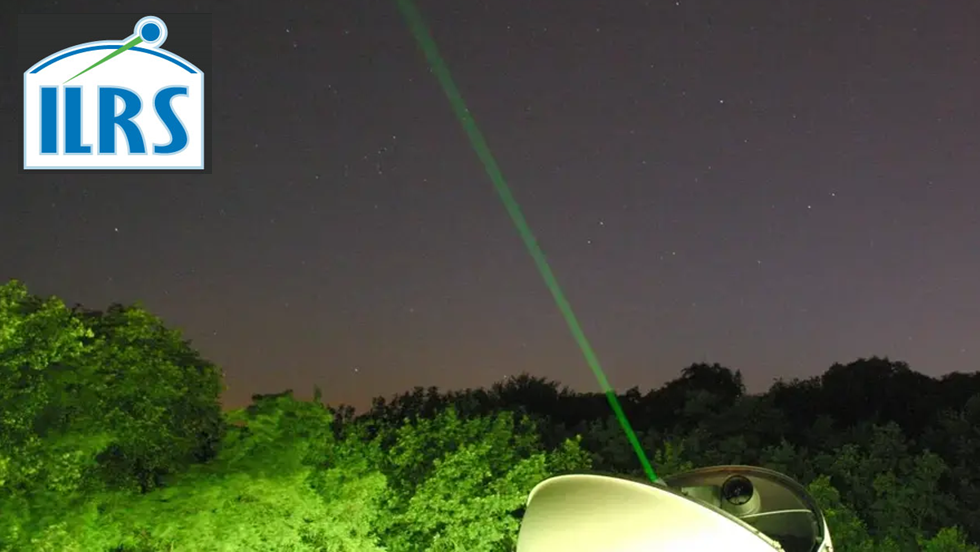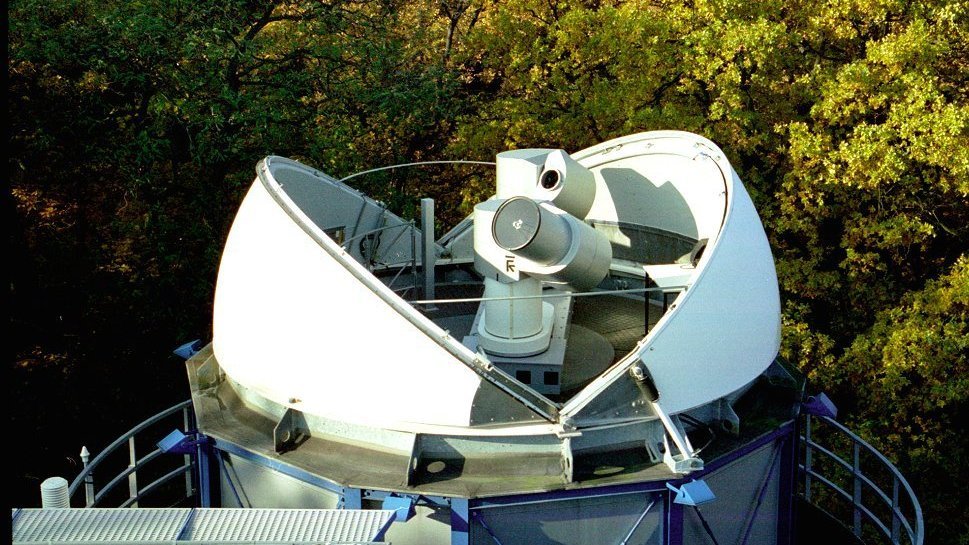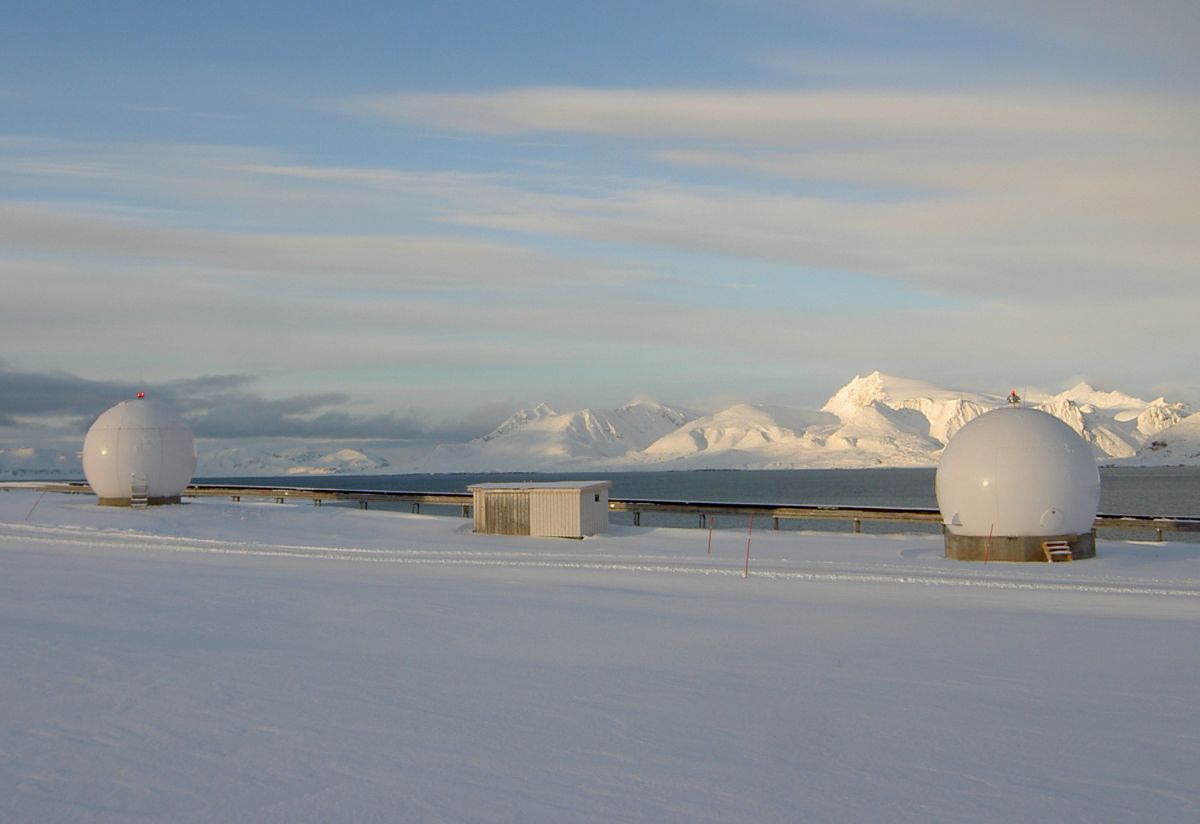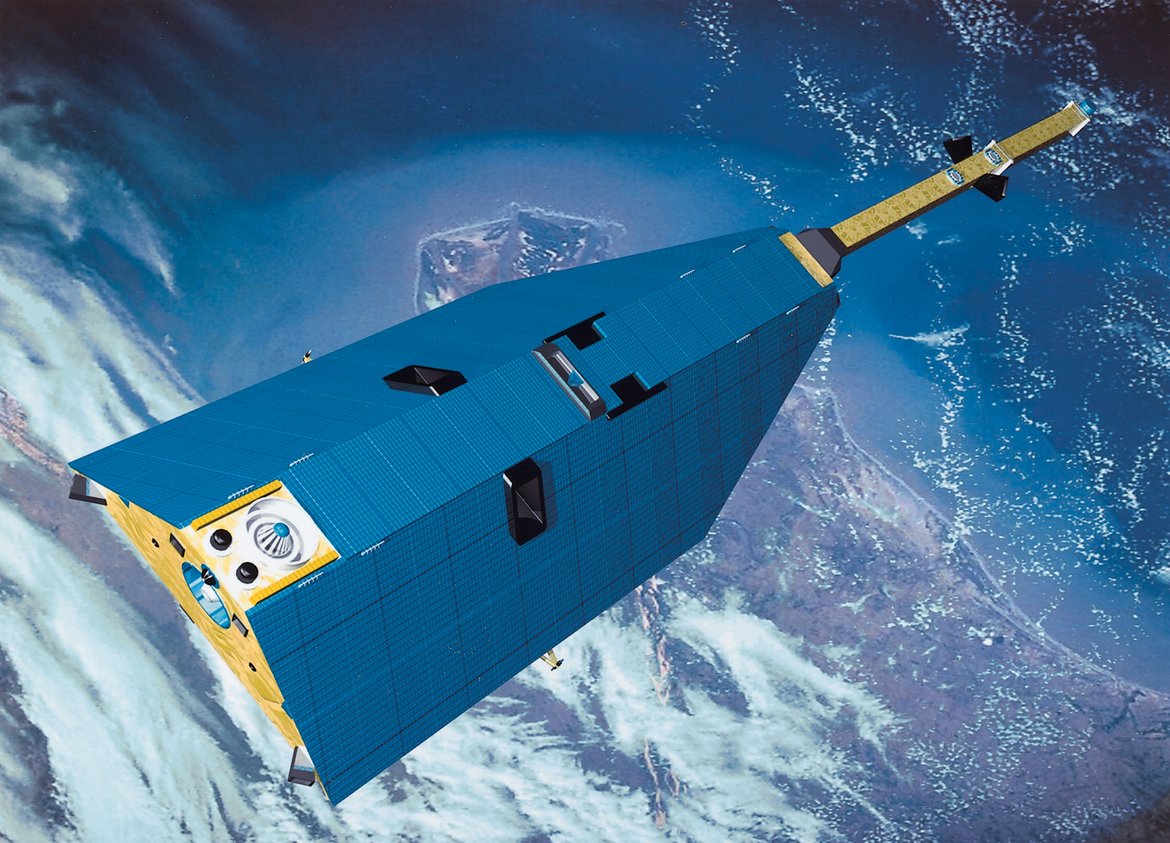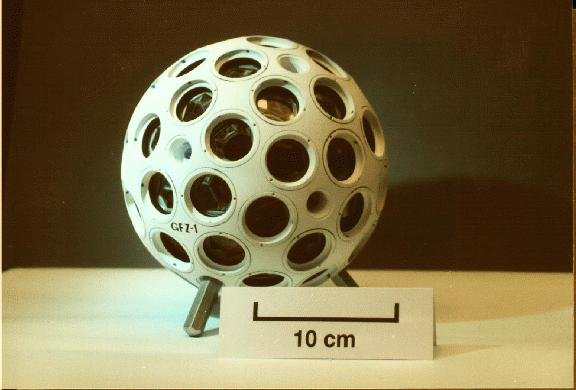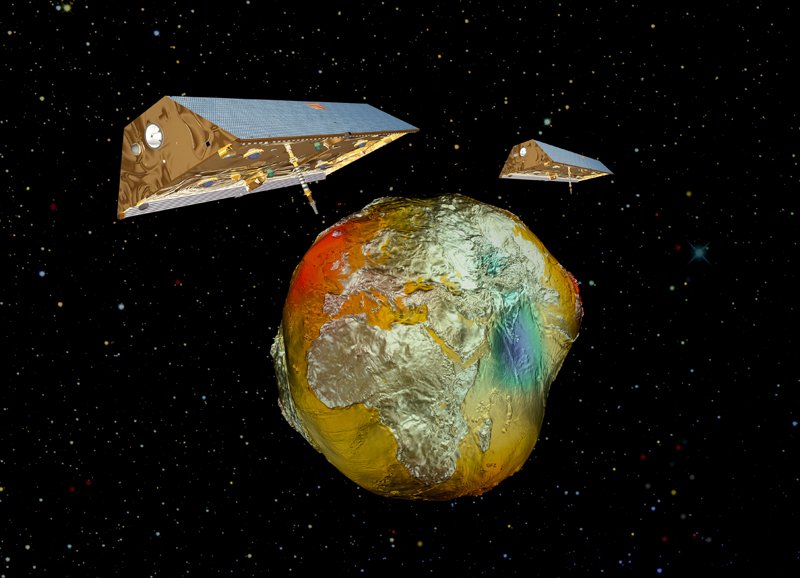Satellite Systems
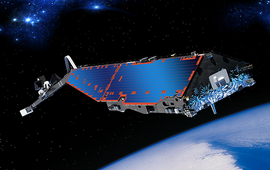
GFZ was and is involved in the development, manufacturing, operation, and analysis of various geoscientific satellite missions and systems. Further, a Satellite Receiving Station and a Satellite Laser Ranging Station are operated at the GFZ.
The GFZ supports several low Earth orbiting satellites (LEOs) along with their ground segments. The space segments (satellites), consisting of satellite bus, subsystems and scientific payload, typically stay in orbit for five years, but may be operational for up to 15 years (e.g. GRACE). In contrast, the ground segments, such as data reception and tracking stations, calibration, data processing and distribution facilities, are permanent systems operated for several satellite missions.
After the successful mission operation of the passive GFZ-1 satellite (1995 –1999) and the subsequent CHAMP gravity/magnetic field and atmosphere sounding satellite (2000 – 2010), GFZ is presently engaged in core management, science data exploitation and mission operations for the GRACE gravity mission (2002 – 2017). We are also strongly involved in the data processing, calibration and validation of ESA’s geomagnetic and ionospheric Swarm constellation mission (launched 2013). We provided on-board two-frequency geodetic GPS receivers for the German SAR mission (X-band) TerraSAR-X (launched 2007) and TanDEM-X (launched 2010) missions; they provide SAR and atmospheric sounding groups worldwide with precision orbits and radio occultation products. For the ESA GOCE gravity mission (2009 – 2013), we have routinely generated global gravity field models within the GOCE High Level Processing Facility (GOCE-HPF).
EnMAP - Scientific support of the hyperspectral satellite mission
The Environmental Mapping and Analysis Program (EnMAP) is a German hyperspectral satellite mission that monitors and characterizes the Earth’s environment on a global scale. The primary goal of EnMAP is to provide accurate diagnostic information on …
GRACE-C - Gravity Recovery and Climate Experiment Continuation Mission
The primary objective of the GRACE-C Mission is, as for GRACE and GRACE-FO, to obtain precise global and high-resolution models for both the static and the time variable components of the Earth's gravity field. As in the original GRACE missions, thi…
GRACE-FO - Gravity Recovery and Climate Experiment-Follow-On Mission
The primary objective of the GRACE-FO Mission is, as for GRACE, to obtain precise global and high-resolution models for both the static and the time variable components of the Earth's gravity field. As in the original GRACE mission, this goal is ach…
Satellite Receiving Station Ny-Ålesund (Spitsbergen)
The GFZ Helmholtz Centre for Geosciences operates a satellite receiving station at Ny-Ålesund, Spitsbergen (78° 55´ North, 11° 56´ East) to receive data from research satellites in polar orbits. The station is located about 1 km outside the village,…
CHAMP - CHAllenging Minisatellite Payload inactive
CHAMP (CHAllenging Minisatellite Payload) was a German small satellite mission for geoscientific and atmospheric research and applications, managed by GFZ. With its highly precise, multifunctional and complementary payload elements (magnetometer, ac…
GOCE - Gravity Field and Steady-State Ocean Circulation Explorer inactive
The Earth explorer satellite GOCE (Gravity Field and Steady-State Ocean Circulation Explorer) was the first satellite mission within the framework of the Living Planet Program of ESA. This satellite mission was mapping the Earth's gravity field on g…
GRACE - Gravity Recovery and Climate Experiment inactive
GRACE was a joint project between the National Aeronautics and Space Administration (NASA) and the Deutsches Zentrum für Luft- und Raumfahrt (DLR). The mission has been proposed in 1996 jointly by the University of Texas at Austin, Center for Space …
